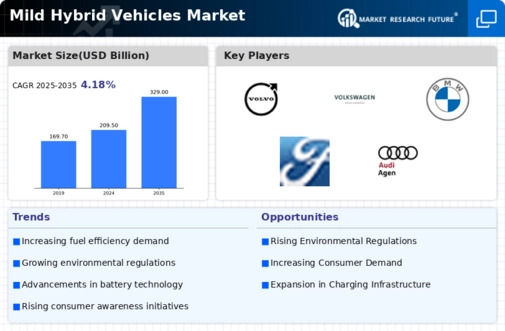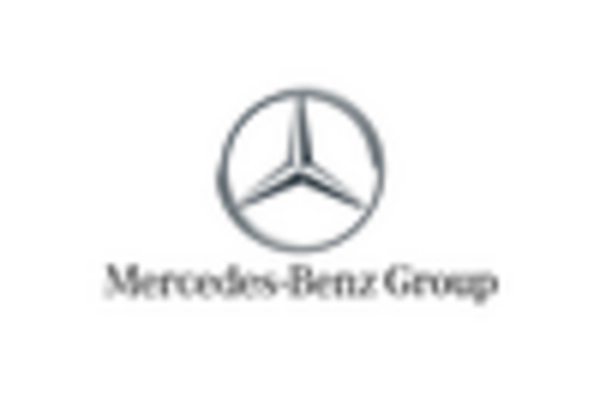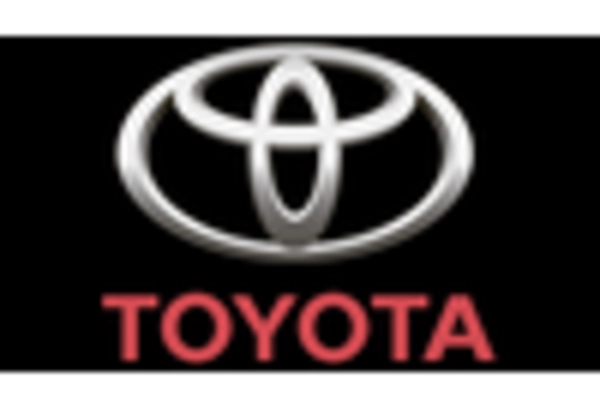Leading market players are investing heavily in research and development to expand their product lines, which will help the mild hybrid vehicles market grow even more. Market participants are also undertaking various strategic activities to expand their global footprint, with important market developments including new product launches, contractual agreements, mergers and acquisitions, higher investments, and collaboration with other organizations. To expand and survive in a more competitive and rising market climate, the mild hybrid vehicles industry must offer cost-effective items.
Manufacturing locally to minimize operational costs is one of the key business tactics manufacturers use in the global mild hybrid vehicles industry to benefit clients and increase the market sector. Major players in the mild hybrid vehicles market, including Toyota Motor Sales, USA, Inc., Ford Motor Company, AB Volvo, Continental AG, ZF Friedrichshafen AG, Hyundai Motor Company, and others, are attempting to increase market demand by investing in research and development operations.
Volvo Car AB is a subsidiary of Zhejiang Geely Holding Group Co., Ltd, a car manufacturing company. It manufactures various cars, including SUVs, wagons and sedans. Volvo Car markets its products under the Volvo brand. Its models include XC90, XC70, V70, V60, V60 Cross Country, S80, S60 and other related models. It provides fleet sales and concept cars. The company has product development, manufacturing, sales, technology and customer service operations in Sweden, Belgium, and China. It sells cars through a network of dealers worldwide.
In November 2021, Volvo Cars launched a mild hybrid version of its flagship XC90 SUV in India. This mild hybrid petrol engine on the new Volvo XC90 replaces the 2-liter diesel engine that was previously available. The new petrol mild hybrid XC90 is available in a sole B6 Inscription trim, and the four-cylinder turbo-petrol unit works in conjunction with a 48V integrated starter-generator motor.
Mercedes-Benz Group AG, formerly Daimler AG, is an automobile company. It develops, manufactures and distributes premium and luxury cars and vans. The organization also offers several services, such as financing, leasing, car subscription, car rental, fleet management, insurance brokerage, digital charging and payment services, and innovative mobility services. The company strives to develop efficient powertrains and go all-electric in an emissions-free, software-driven environment. It has production facilities in Europe, North and Latin America, Asia and Africa. The company sells its vehicles and provides services in almost every country on all continents.
In October 2021, Mercedes-Benz unveiled two models, GLE Coupé and GLE, as diesel mild hybrids. They are provided with the existing four-cylinder diesel engine OM 654 M, which has a second-generation integrated starter-generator (ISG) and provides 200 kW/272 hp. The ISG includes the 48V electrical system.


















Leave a Comment